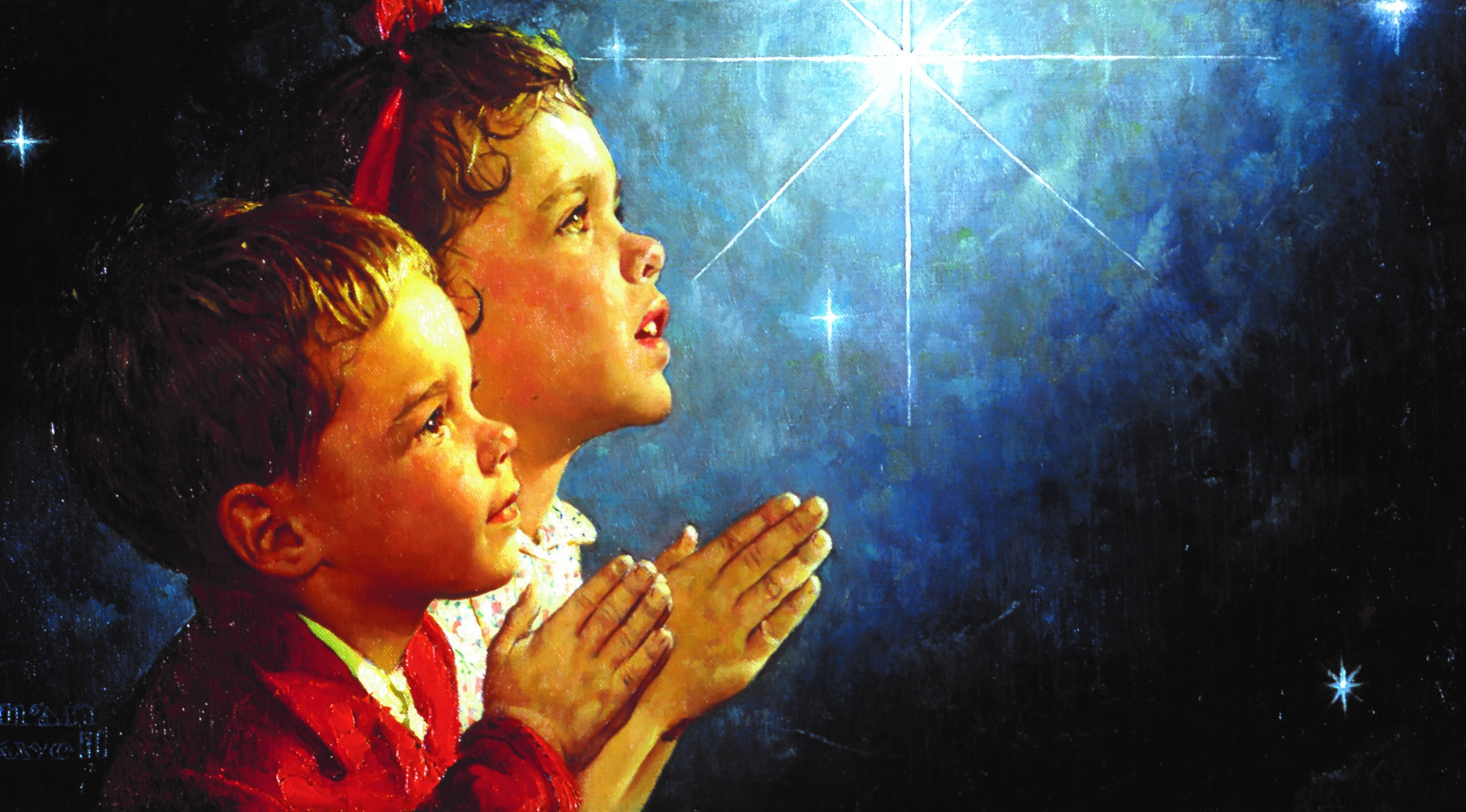“I was showing the America I knew and observed to others who might not have noticed.”
—Norman Rockwell
Norman Rockwell’s career spanned six decades, and he is certainly one of America’s best-known 20th century artists. Many of us love him. Many dismiss him as a romanticist and kitschy caricaturist, but a showing of his works gives a much deeper appreciation for “America’s Best Loved Artist.”
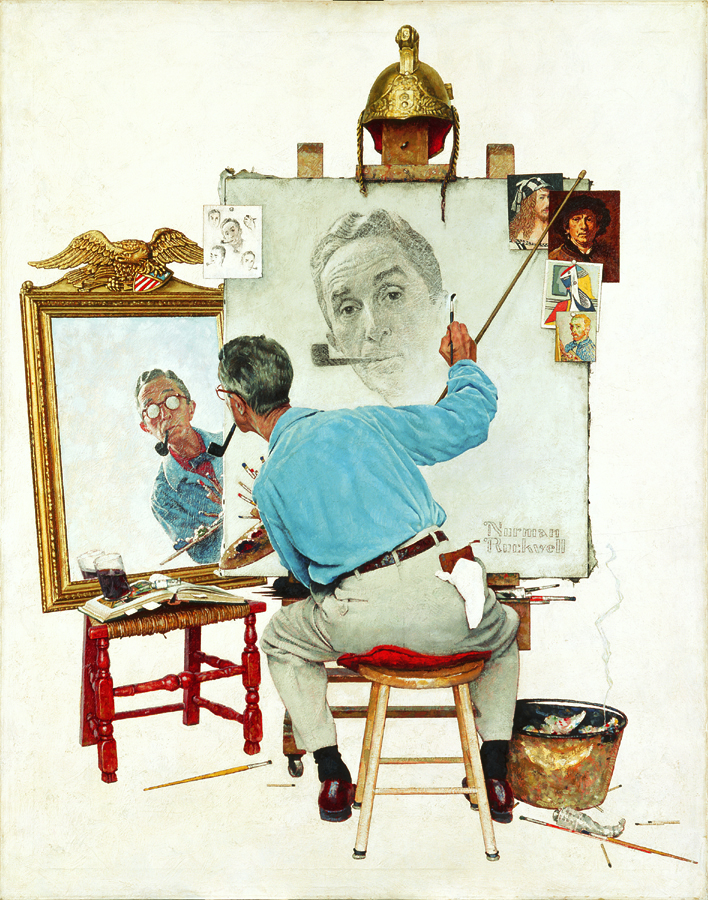
When the show came to the Museum of the Shenandoah Valley, we went to see it with anticipation. “Will it have any original paintings in it?” my wife asked. “I certainly hope so,” I replied. Yes, I would have enjoyed a selection of Saturday Evening Post covers, but I really wanted to see brushstrokes! I was not to be disappointed!
Rockwell began painting professionally at a young age. At 21, he was painting covers for the Saturday Evening Post. He was a disciplined and masterful painter and achieved solid success very early. While most of us are familiar with the oft-reproduced Saturday Evening Post illustrations, few are aware of other masterful works that appear early in his career. These paintings show a keen sense of observation and composition, and a genuine knowledge of the techniques of the old masters.
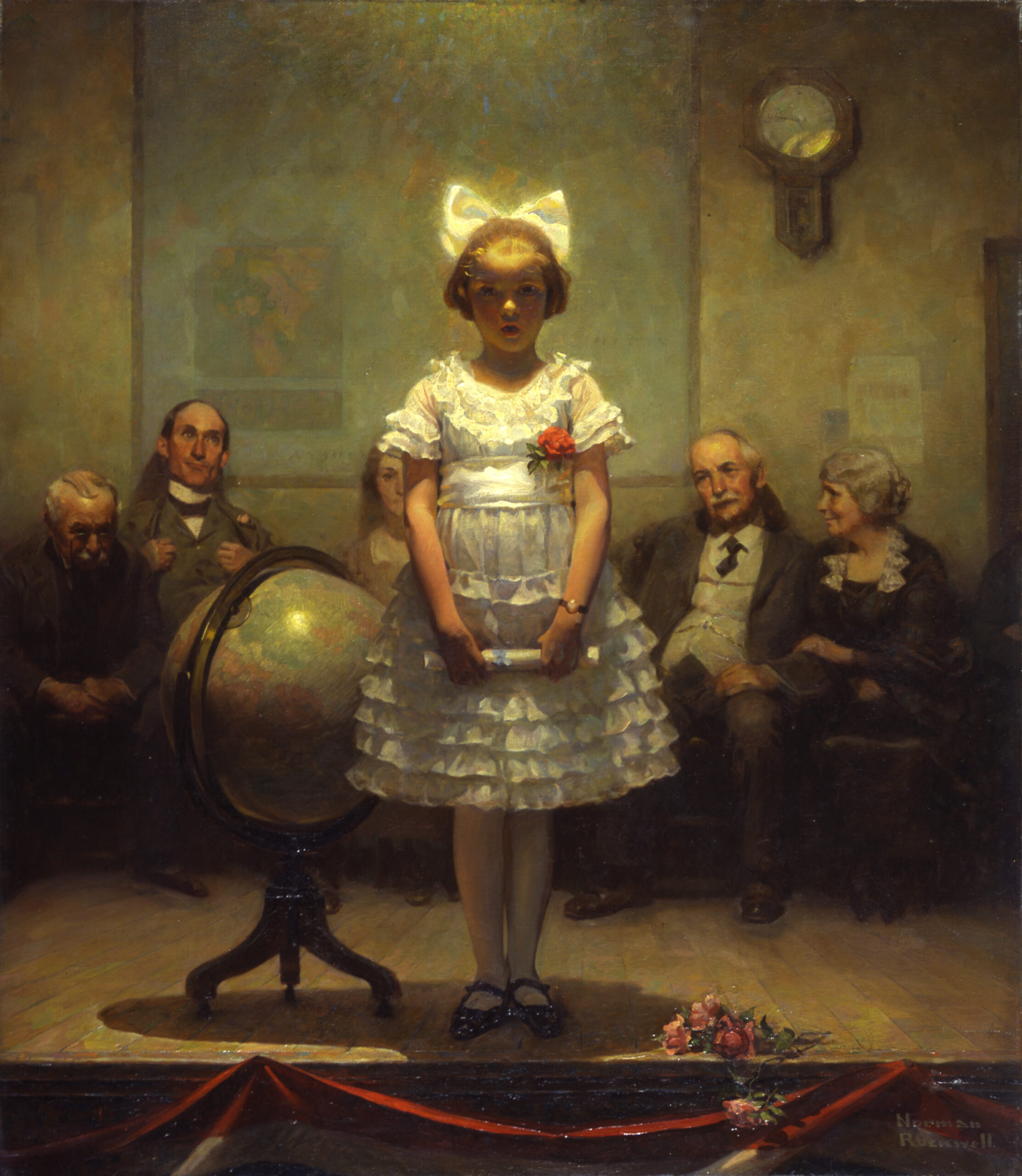
She stands erect before an audience, lit from above and behind, in a style reminiscent of the works of Degas or Rembrandt. The light is accentuated by a touch of impasto and skilled brushwork. The subject is a serious one. “The Young Valedictorian,” painted in 1922, captures a young girl standing before her school in a white dress at graduation. The interior behind her is meticulously detailed. In the shadows, a row of seated faculty members listens. A globe on stage reflects a spot of light in highlight on its varnished surface. A clock on the wall, to the upper right of the speaker, marks time.
All eyes are on the face of the young speaker. Rockwell’s lighting and masterful composition see to that. Here are the brush strokes of a genius! Amazingly enough, this work was never published. Few people are aware of it, and if it were on a wall by itself, perhaps few would attribute it to Norman Rockwell. There is no irony, no humor, and no caricature. It is a beautiful capture of a poignant moment. It reveals a Norman Rockwell I want to know.
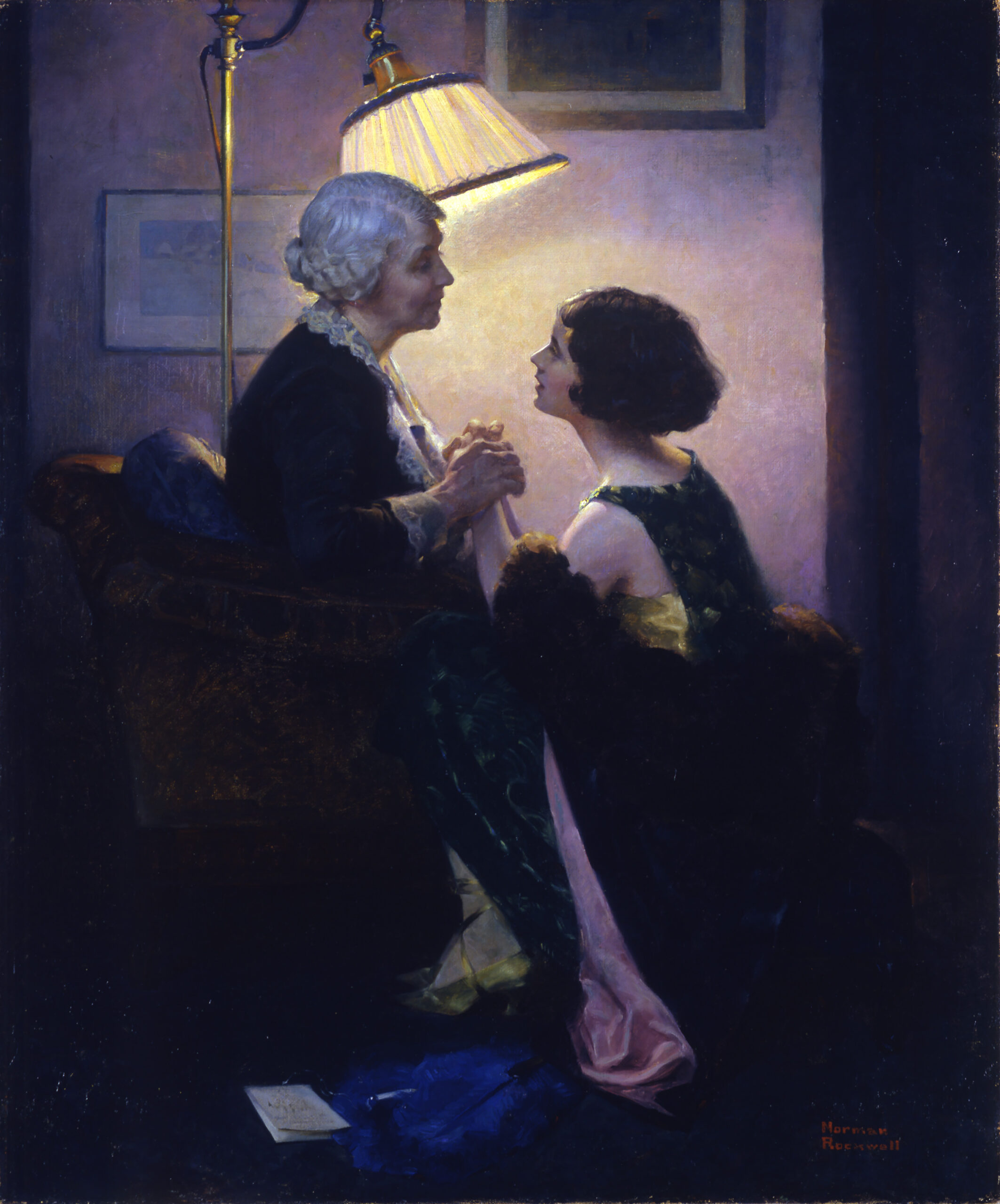
“After the Party” is another painting by Rockwell from the same year. It was painted as an advertisement for Edison Mazda (later to become General Electric). In a masterful bit of chiaroscuro, Rockwell captures a conversation between a young woman and an elderly lady. A single electric lamp backlights the two figures—presumably talking late in the evening after an important social event. The composition creates the conversation. Again, it shows Rockwell’s mastery of his art, as well as his observational skills.
In “Two Children Praying,” painted much later in his career—in 1954—Rockwell captures an America still in touch with its core values. This painting was done for a billboard advertisement for Longchamps Restaurant, Union Square, New York. The background is a night sky illuminated by a bright star, and its light falls across the faces of a young boy and girl as they pray. Rockwell’s detailed pencil study for the work shows the artist’s commitment to excellence in a work like this. The sketch is reminiscent of those that Leonardo da Vinci did leading up to painting “The Last Supper.” When one remembers that Leonardo took a commission for a rather common refectory scene and added the drama of the betrayal—rendered in the relatively new medium of oil paint—one can begin to appreciate that Rockwell stepped up to the easel of an illustrator and brought to it the drama that his artistic skills made possible.
Both da Vinci and Rockwell could capture the fine nuance of personality. Though Rockwell would often push it to the limit in his magazine covers, he could pursue subtlety. In a painting entitled “Norman Rockwell Visits a Country School,” painted in 1946, Rockwell depicts a loving teacher in a small (perhaps one-room) schoolhouse reading to a rapt group of students hanging on her every word—all but one! There, on the other side of the wood stove that heats the room, sits a girl lost in her own book. The painting tells its own story. Here I must tell you, Rockwell’s interiors are gorgeous! If I wanted to recreate a country schoolhouse, this painting is the template, rendered down to the minutest detail. Even the children’s art on the walls is amazingly realistic. Norman Rockwell was witness to an America in transition.
The body of his work is no less than a historical record. His work spans the Roaring ‘20s, the Great Depression, and the Great War. Read the headlines of the Saturday Evening Post covers, and you discover an America whose journalists were not afraid to call out the evils of Communism. Rockwell may indeed have romanticized some of his work, but he had a sense of the life and struggle of ordinary Americans.
Nowhere is this more evident than in a series of posters he designed for a commission from the government: “The Four Freedoms.” The paintings are based on Franklin D. Roosevelt’s 1941 State of the Union Address. The president laid out four “fundamental freedoms” in that speech: freedom of speech, freedom of worship, freedom from want, and freedom from fear. The first two, taken directly from the First Amendment of our Constitution, reiterate freedoms unique to people living under a system of limited government—freedoms that belong to the people. In the painting “Freedom of Speech,” a man in a worn work jacket stands to address a meeting of local government. The image resonates with all of us who are now standing up at school board meetings to protect the interests of our families.
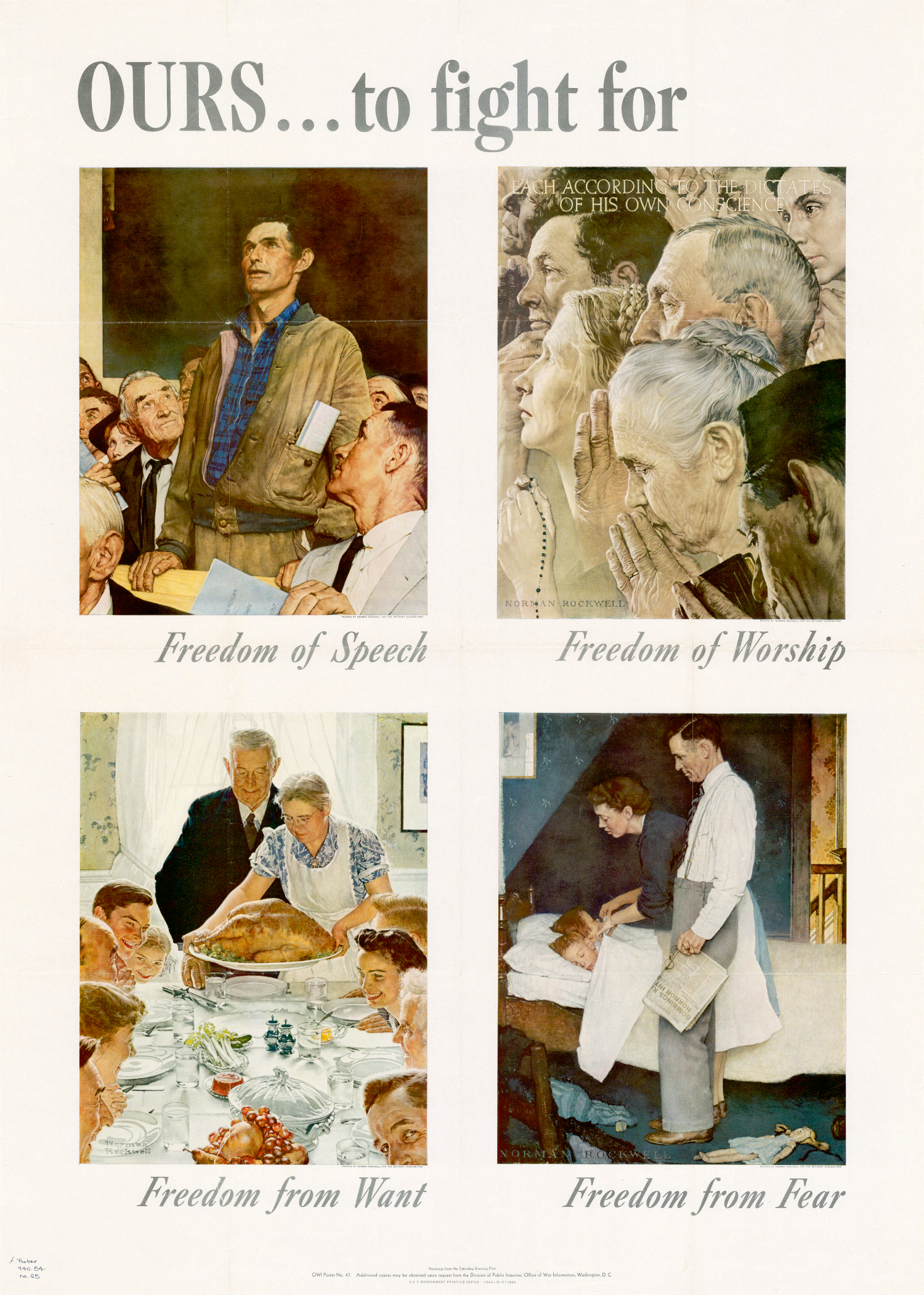
The second painting, “Freedom of Worship,” shows a rich composition of diverse faces—the faces of the devout. This resonates with all of us whose ancestors came here for freedom to practice our faith’s dictates. But here, the freedoms take a turn from freedom to “do” something to freedom “from” something.
Freedom from want and freedom from fear are not in the Constitution. They are rather a statement of some of FDR’s New Deal ideals. They would play out in the work of the Beltsville Agricultural Research Center, near Washington, D.C., where much work was done to create our modern, chemically dependent agriculture. Located next to Beltsville is Greenbelt, Maryland, originally an example of Eleanor Roosevelt’s idea of a centrally planned city, intended to replace the squalor of depression America. Here, the government proposed that it could eliminate want and fear. That was a new idea. All one had to do was “democratically assent to central planning.”
In 1963, Rockwell left the Saturday Evening Post, and worked for Look magazine. Here he was given more creative latitude, and he freely pursued his passion for civil rights and space exploration. He painted right up to his death in 1978 at the age of 84, leaving an unfinished work on his easel.

